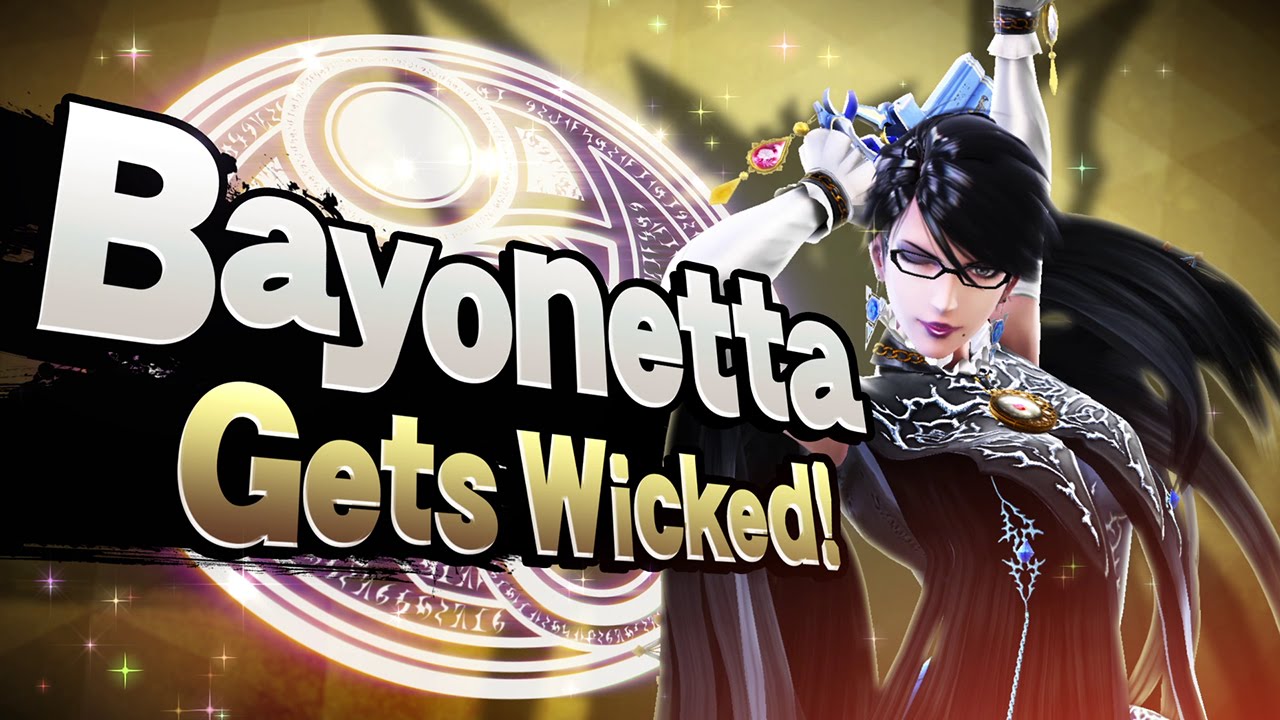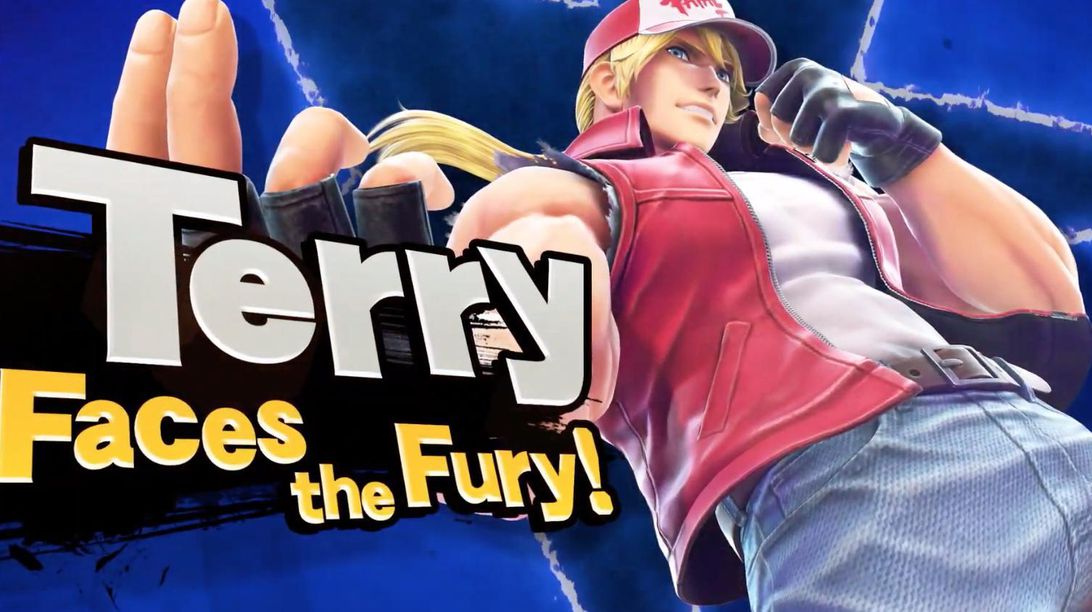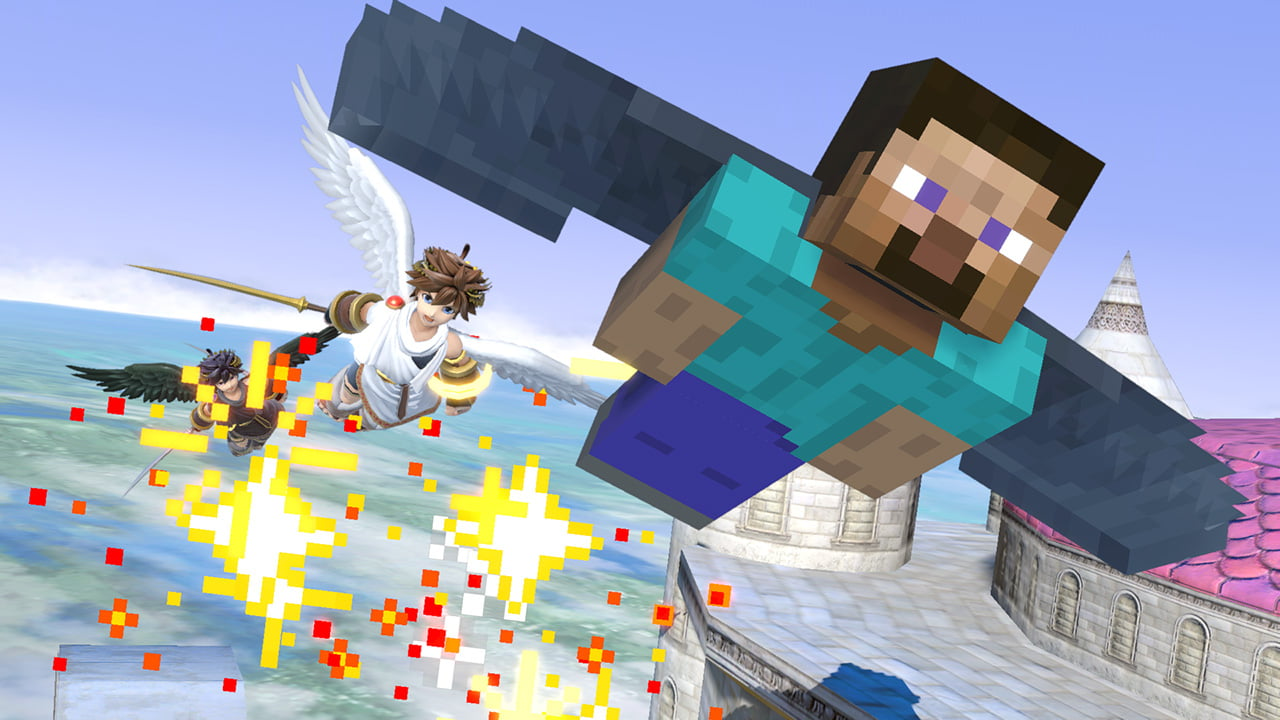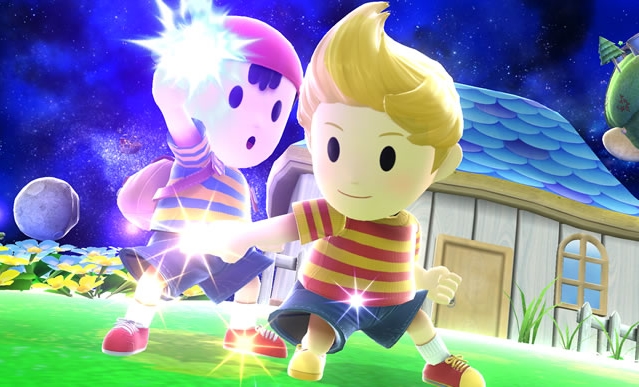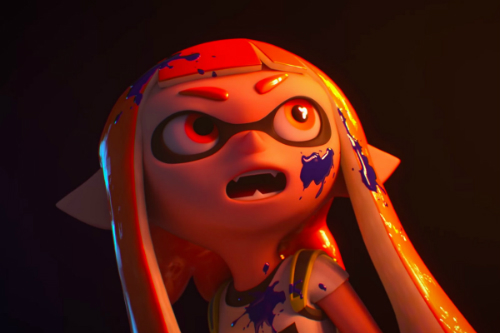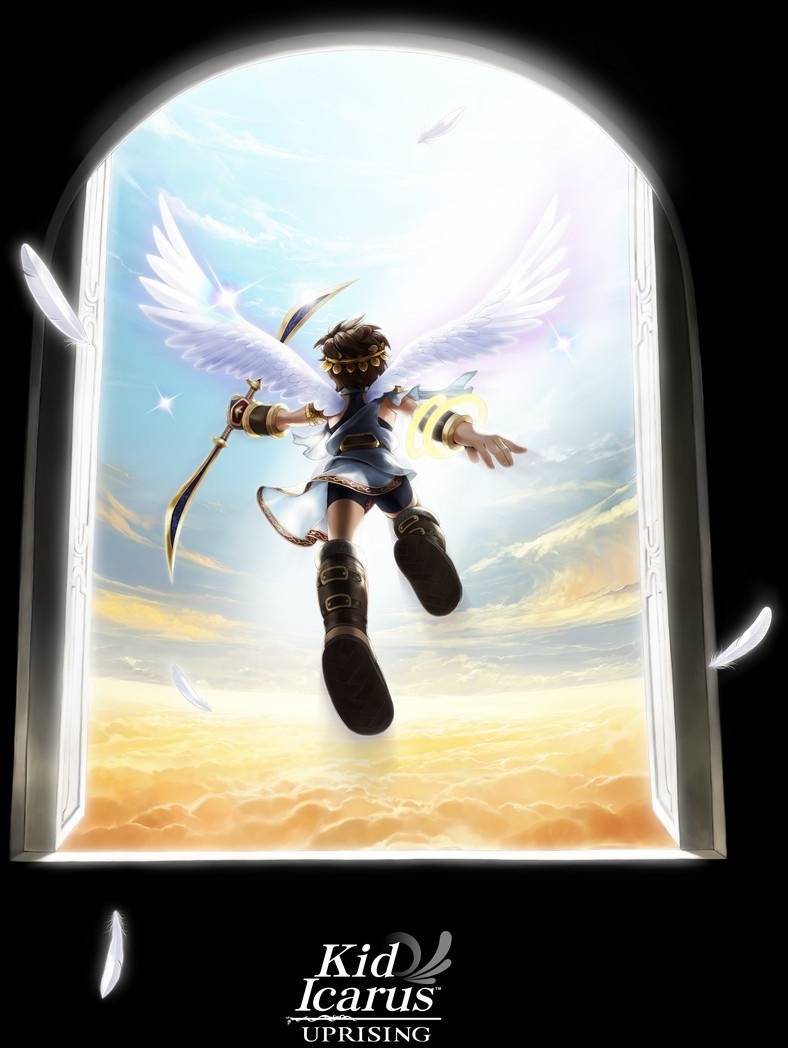
Not all developers, even among the most famous, have a recognisable directorial style. One could even argue that the pool of professed game auteurs is alarmingly small, only a small pocket of veterans having developed unique qualities distinct to every game they touch. However minuscule this elite group may be, if we were to all put pen to paper and list, I’d wager a handful of names would reoccur: Hideo Kojima, Will Wright and, on the subject of this review, Masahiro Sakurai.
Creator of the Kirby series, founder of Super Smash Bros., and all ’round good guy, Sakurai has earned a reputation for wild, larger than life, feature rich game design, and right from the onset it’s clear that philosophy extends to Kid Icarus: Uprising. Seriously, on the Nintendo 3DS home menu, the jingle associated with the inserted game cart is the same 8-bit tune that plays alongside the very original NES Kid Icarus. The self aware silliness doesn’t stop there, but stating it’s case before the game has booted should give most players an idea of just what they’re in for.
Calling Uprising a new Kid Icarus game would be inaccurate. If anything, it’s a reboot, through and through, sharing little to no mechanical similarities to the Metroidvania original. Instead, what Sakurai has crafted is a chaotic action adventure that can be best described as a weird hybridisation of Star Fox with a dash of Super Smash Bros., emphasising his trademark manic gameplay with an endless barrage of quirky humour. You see, though it shares none of the original Kid Icarus game design, it does share many of the enemies and items, and continually breaks the fourth wall referencing these, along with other Sakurai-directed games (and then some). A tale of Medusa-versus-the-world quickly escalates into a truly outrageous and ludicrous story rich with silly dialogue and punchy one-liners, each moment aiming to best the last in madness and comedy.
This directorial approach demands Uprising be the most story focused game Sakurai has ever directed, to a point of surprise. Rarely does a moment go by without a character having something to say, bickering and teasing amongst one another, and backing the action with exposition and banter. And this, in turn, is one of the most enduring qualities of Uprising: the lovable characters, witty dialogue, and air tight delivery from the entire cast. This is a story and game about only one thing: fun, and it delivers in spades.
To draw upon Star Fox and Super Smash Bros., Uprising defines each stage by two separate acts. To begin with, Pit takes to the sky, and is directed through a series of cinematic set pieces and gorgeous environments in gameplay not unlike anything you’d find in another rail shooter. More precisely, these stages draw most parallels with Sin & Punishment 2, the player given freedom to direct Pit around the screen to dodge fire and environment hazards, lining up shots and directing the crosshair with stylus based touch controls. What could have been clumsy instead controls intuitively, largely thanks to the heavily directed and controlled stage progression minimising over burdening gameplay in favour of more streamlined, simplistic action. By far the biggest highlights of the game, these flight segments are an exclamatory example of Sakurai’s love for edge-of-your-seat action and widely colourful presentation. Brilliantly paced and excitingly directed, the shifts between onslaughts of enemies to diving through chasms and ravines, coupled with gorgeous presentation of huge vistas and sweeping terrain (that look amazing in 3D), can be likened to a digital roller coaster. Minus the barf bag.
Unfortunately, this tightly controlled direction begins to fall apart in the second of act of each stage, which puts players on foot for quasi-third person shooting and melee action. Without a second analogue pad standard to the platform, Sakurai’s team has done their best to merge precise cursor aiming and freedom of movement using just the touch pad. Fans of Metroid Prime: Hunters on the DS will recall complaints of hand cramps, and the problem is no different here, as holding the device in a way to benefit both the analogue pad and touch screen is uncomfortable at best. The included 3DS stand marginally alleviates this issue, though screws over lefties opting to use the Circle Pad Pro, which is completely incompatible with the stand. It’s one or the other, and neither option is appealing. Furthermore, the actual controls for ground sections are…weird, particularly the absence of a traditional bounding box for camera control in favour of swipe gestures. Don’t get me wrong, it works, and proves its value on higher difficulties, but the lack of any bounding box option, coupled with the current control scheme, creates an unnecessarily steep learning curve likely to sour new players.
Ground sections also expose questionable trial-and-error enemy and encounter design. Too often, too early, the game struggles to communicate the intricacies of enemy attacks and weakpoints, throwing the player into rich encounters with enemies coming from all sides. Learning how to best face each battle is one thing, but doing so while wrestling with the controls? Expect damage from enemies you didn’t see, and health lost amidst explosions of confusing colourful attacks and absolute chaos.
The silver lining of these ground stages is revealed at two points: firstly, getting used to the controls, which makes all the difference. Secondly, and most importantly, understanding that the heavily directed and cinematic presentation is deceptive. At its heart, Uprising is an arcade game. The idea isn’t to play a stage once and forget about it. It’s to replay stages. Up your score. Master the encounters. And so on. To encourage this, the team has built an intriguing difficulty system based around risk and reward. Everything you do in the game unlocks hearts. These are your points. At the start of each stage you use your earned hearts to ‘gamble’ a difficulty setting. Higher difficulties cost more hearts, throwing the player against more enemies and harder encounters. So why gamble? Because defeating these enemies earns, in turn, even more hearts than you started with. Certain areas of stages are even locked off at low levels, and rewards for discovering secret areas and hidden treasures are greater when matched with a high difficulty.
But why earn hearts? To buy and craft new weapons, of course. Pit isn’t just armed with a bow, he’s armed with whatever you chose, and Uprising features a ridiculously huge variety of weapons and powers. Claws, cannons, staffs, bows: you name it, and Uprising has it. Each weapon is ranked with melee and ranged power, and almost all weapons have some functional difference to the others. This isn’t a case of simply finding the weapon with the highest damage values. The unique qualities and stats between weapons allow for a wide variety of play styles, each bringing a different tactic to every battle. Moreover, players are encouraged to refrain from hoarding weapons, as each weapon not only has a sell value, but can also be crafted with other weapons to create new ones. Throw in weapon gems unlocked through street and spot pass, and you’ll quickly find yourself wrapped up in the addiction of hunting out new loot and goodies, not unlike any other loot based game.
Though implementation of weapons is excellent, powers unfortunately are not. Not so much the powers themselves, which are varied and useful, but the way in which they must be used in-game. Powers are displayed as tiny little icons on the touch screen and, quite frankly, in the heat of chaotic battle where these powers are most useful, it’s simply too fiddly to scroll through the list and find what you want. Not without risking another enemy beating. Like most of Uprising‘s control woes, over time this becomes manageable, yet is still another bump in the already steep learning curve.
As a nod to Super Smash Bros. Sakurai’s team has gone out of their way to include even more content than what’s mentioned above. Remember trophies from the aforementioned game? They’re back, this time called idols, and unlocked by either completely specific challenge requirements, or by gambling coins and ‘idol eggs’ (think Super Smash Bros. Melee‘s coin machine). Idols are then mixed into a quirky augmented reality card game. Uprising ships with six of these cards, half randomised, and viewing these through the camera will bring their associated characters to life. Face two cards against one another and they’ll fight, battling attack and defence statistics to see who comes out on top. It’s a cheeky gimmick. Fun at first, it will probably be lost on many, as they’re required to go out and buy Uprising booster card packs just to play, despite most if not all of the idols unlockable in the game anyway.
Next to these gimmicky extras is a multiplayer mode. For better or worse, Uprising‘s multiplayer is based entirely around on-foot gameplay. Those control problems I mentioned? Yeah, they’re here too. Same goes for the often confusing gameplay, only worse so, as matches tend to devolve into a chaotic cyclone of powers and attacks making it hard to tell who is where and what the hell they’re doing. As this happens often, the framerate takes a serious beating, a disappointment given the normally consistent and smooth engine performance during the campaign.
Though, much like the single player stages, the multiplayer too benefits from a bit of learning. As one becomes accustomed to its idiosyncrasies, one finds an enjoyable if hectic battle for power. Free-for-all is forgettable, as the team matches deliver the premise more convincingly, each team grinding away at the opposition’s universal life bar, eventually battling a single, overpowered ‘angel’ avatar to hopefully win the match. Unlocked weapons and powers from the single player are cross compatible, further encouraging cranking the difficulty and buying more loot, knowing it is useful across two different modes.
Uprising‘s multiplayer supports online, but unfortunately due to having the game quite early I struggled to find many matches, and those I found (with international players) were a bit laggy. Match search does allow for local filtering though, so lag should be less of a problem once the game is available across Australia. On the plus side, just like Sakurai’s past games, Uprising has full bot support. So even if you’re not a fan of fightingreal people, you can enjoy the multiplayer in its fullest against the AI.
It’s funny to think that Kid Icarus: Uprising was the first game announced for the Nintendo 3DS. It wasthe debut game at E3 2010. And now, almost a year since the platform’s launch in Australia, it’s finally here. But was it worth the wait? By large, yes. Playing Uprising was a conflicting experience. At first, the highs of the exceptional flight stages were tarnished by the underwhelming ground ones. The wealth of unlockables was incredibly appealing, yet hurt by a gimmicky AR game and confusing multiplayer. Though just as it was conflicting, so too was it evolutionary. The more time I spent with Uprising, the more I understood what kind of game it was trying to be. The cumbersome controls slowly but surely became second nature. The multiplayer drew me back. And, most of all, the addictive hooks of arcade gameplay dug under my skin, demanding I return time and time again.
The learning curve is steep, that is true. And the controls? Well, they’ll take some time to win over a lot of players. But Uprising is a game about mastery. Once its mechanics and functions are understood, it challenges the player to make use of their abilities, to master the powers at their disposal, and work towards greater challenges and bigger, bolder battles. And, in turn, it showers daring players with bigger surprises and better rewards.
It helps that, despite having a fairly old school arcade system at its core, Uprising is presented as a high calibre game. As said, it’s deceptive. So easy it is to be caught up in the beautiful sights, breathtaking action, hilarious dialogue, sweeping soundtrack and wild adventure, that you’ll soon forget your playing a traditional arcade game at all. Is that even fair? Is Uprising really traditional? I don’t know. What I do know is that it’s a hell of a ride, from start to finish, and for those able to push through the tough exterior, a brilliant and worthy addition to the ever growing 3DS library.
Incredible flight stages | Snappy dialogue | Packed with content
Steep learning curve | Hit-or-miss multiplayer | Design oddities





